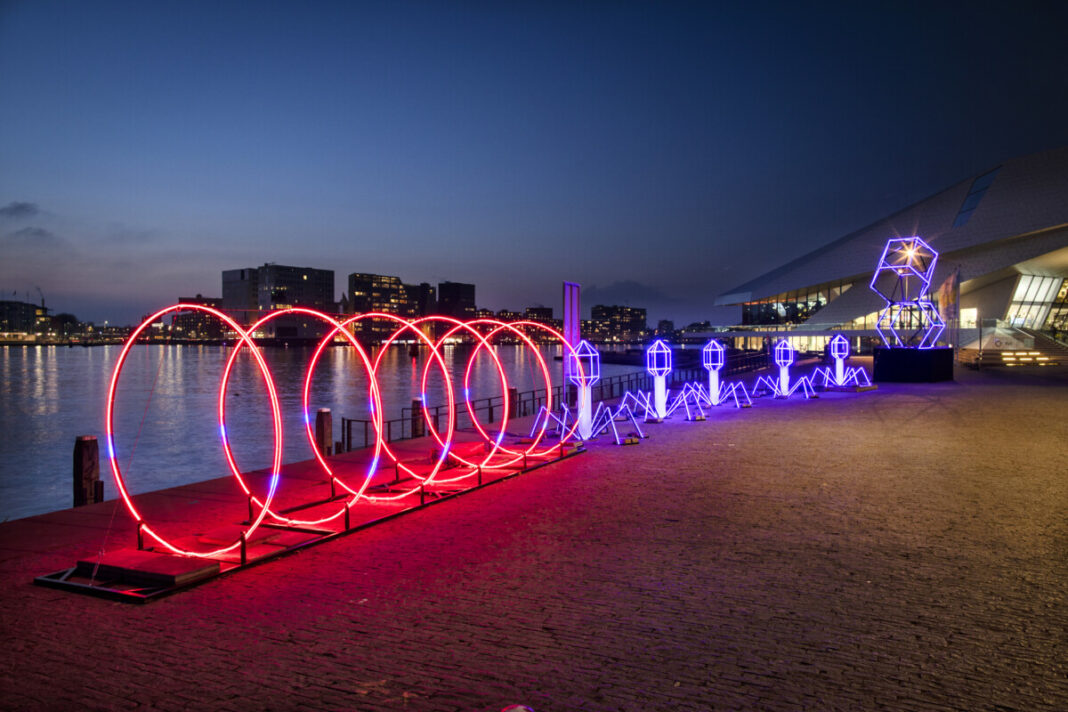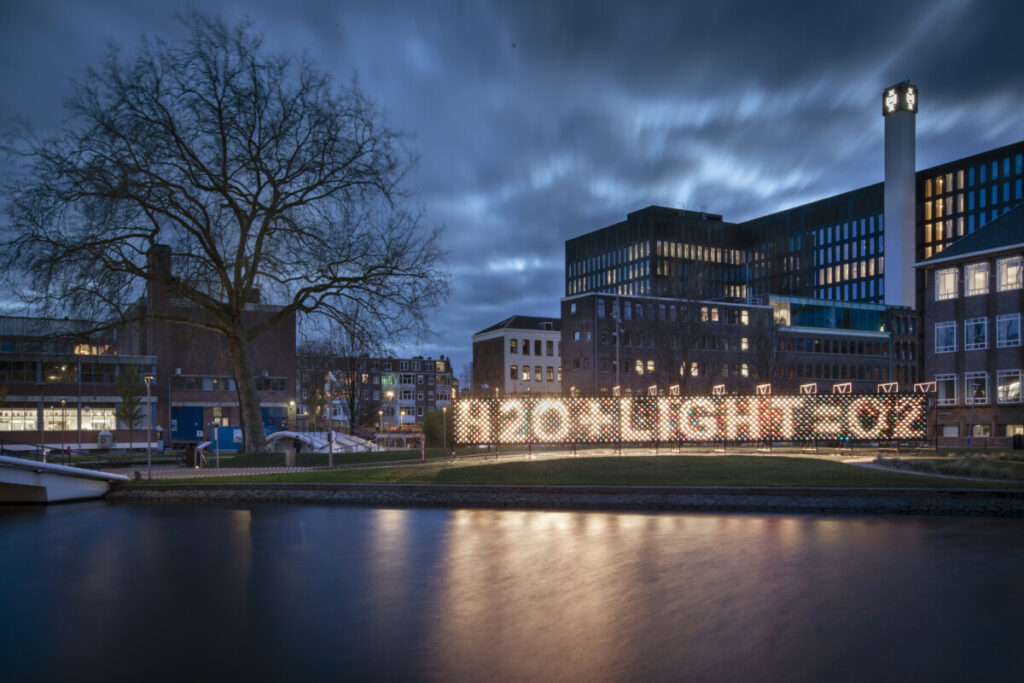This year’s corona edition of the Amsterdam Light Festival does not shy away from topical issues of today. The theme “When nature calls” shines a light on the source of both illness and life.
“When we came up with it in 2019, we had no idea how symbolic it would become,” admits Lucas De Man, creative director of the show this year. “We wanted to start from nature as something that we don’t have to fight or save.”
New plans after corona
At first, a route along the canals was planned as per usual, which spectators could cruise along on boats to admire the 20 large-scale light artworks, reports Het Parool.
“But then corona came and everything fell into the water. As an alternative, we devised a walking route with fifteen works, where visitors could recall poems and stories about those works on their phones. The second wave also put an end to that. Ultimately, seven works remained that we developed with partners such as the University of Amsterdam, the province of Noord-Holland and the municipality of Amsterdam.”
But De Man sees opportunity in the new limitations. He explains that since they don’t have to worry about masses of people now, the team can work on more complex instillations with stories and research behind them.
“We have the responsibility to make Amsterdam more beautiful in form and content,” De Man continued. “With this edition we want to contribute to insights about the city.”
The festival online
As you might have guessed, this year you can enjoy the show from behind your screens at home. A film has been made for each artwork, with comments from the artists, scientists and residents.
The instillations have been spread out broadly around the city to detract people from making a physical tour of the pieces. Three artworks have already been installed, and the last four will go up in the next two weeks.
Light instillations to look forward to
‘The Water We Breathe’ is an artwork by Jasper van den Berg and Stichting Nieuwe Helden that highlights the connection we have with our environment.
“Place a bathtub with Amsterdam surface water in the summer sun for one hour and the algae in the water will produce enough oxygen to let a child breathe for 1 minute.” Van den Berg says. “When you consider that one third of Amsterdam is made up of water — lots of bathtubs! — there is therefore an enormously rich source of oxygen here, purely through the photosynthesis of micro-organisms that are invisible but also indispensable.”
With this in mind, Van den Berg decided to involve 650 students from grades 6 to 8 of primary schools in Amsterdam in his project. Each of them collected water from their living environment which was analyzed for oxygen content in a traveling lab.
The pots of collected water were then clustered according to neighbourhoods to create a “water-oxygen map of Amsterdam”. This was then mounted into a a 32 meter long and 3 meter high installation.
“The color indicates the content,” explains Van den Berg. “It is striking that the ditches of Ransdorp produce relatively little oxygen, I suspect because of over-fertilization. Algae and bacteria are very active in Bijlmer, Noorderpark and Sloterplas.”
Light sources stand behind the pots so that the instillation looks like LED lights that read H2O + Light = O2. “This installation has a positive message. It is an ode to the involvement of the youth,” the artist says proudly.
Does this year’s light festival spark your interest? Tell us your thoughts in the comments below.
Feature Image: Amsterdam Light Festival/Supplied





Sounds like the best of a bad job – I’m glad they’re doing this!